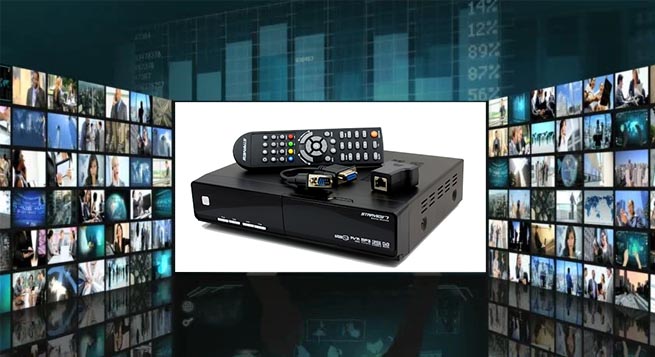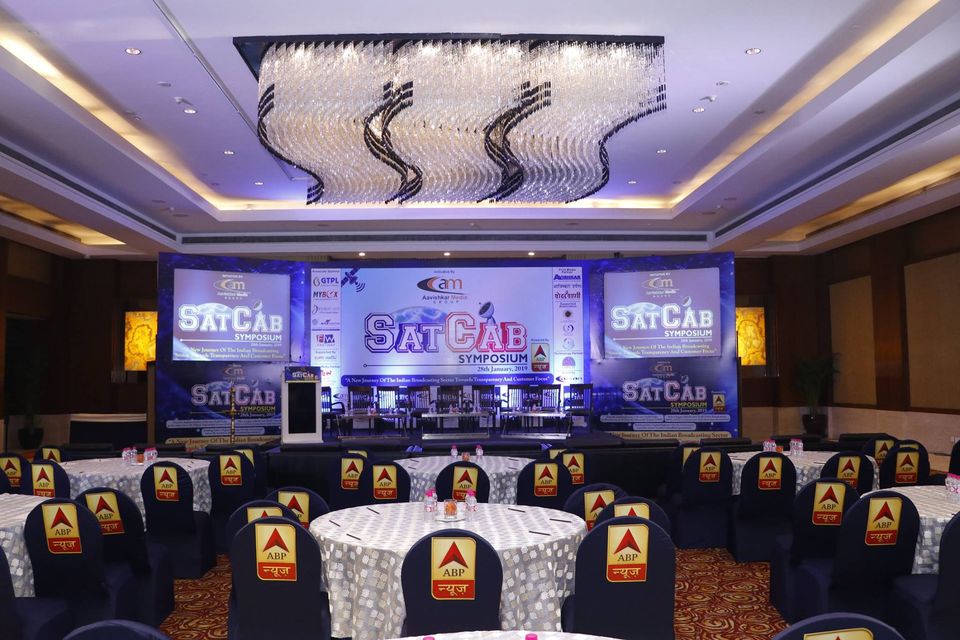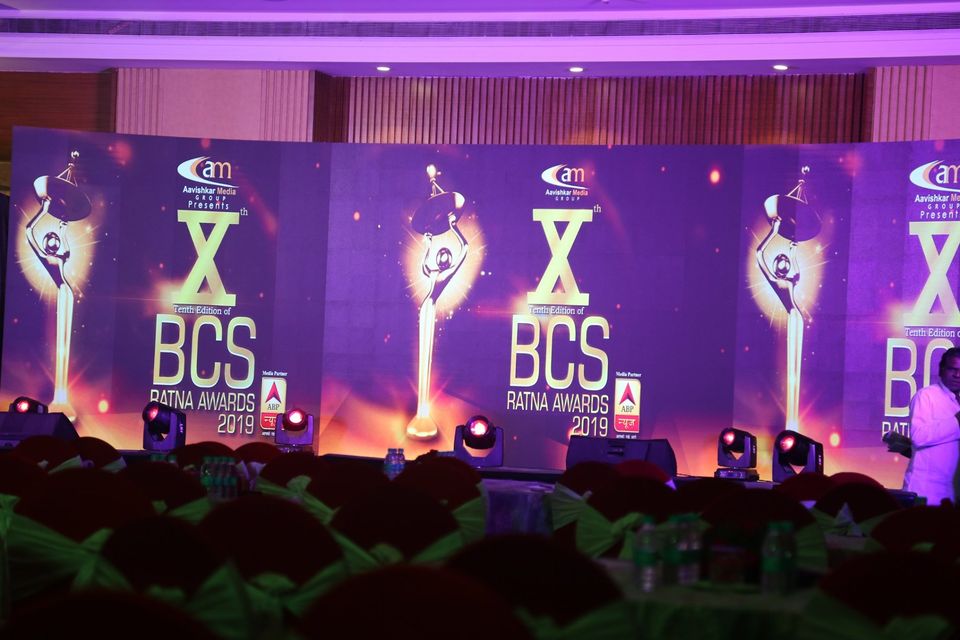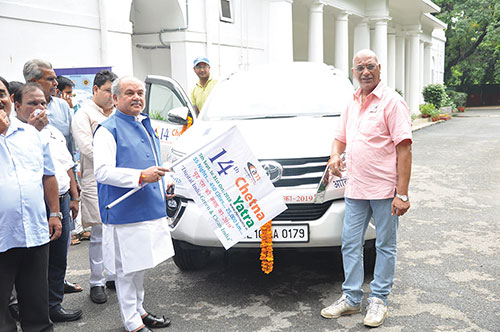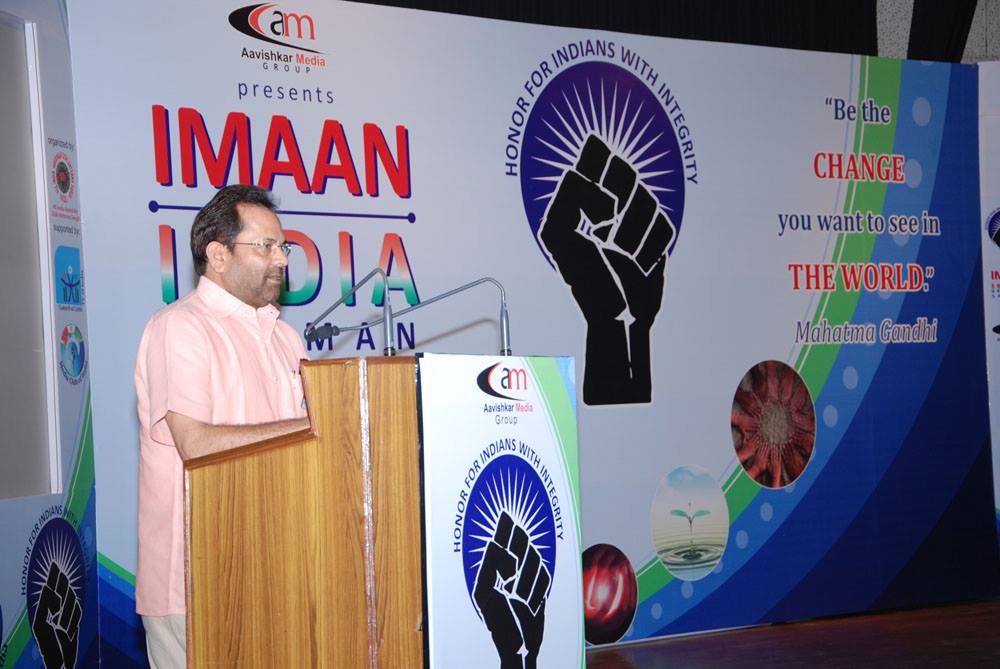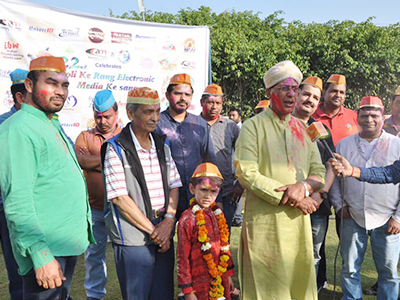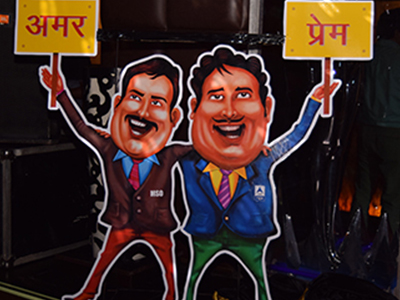Introduction
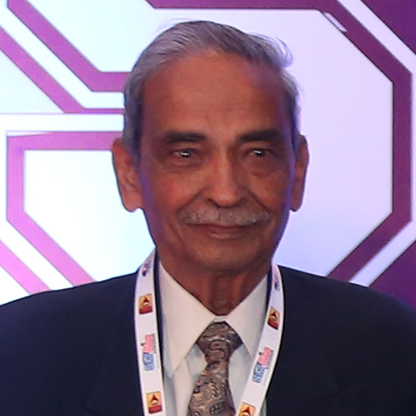
Renowned Industry Observer
Cable TV service( real time aggregated distribution of multi-program, multi RF channels video content over wireline medium), under Cable TV Networks Regulation Act, Rules and Regulations, as amended. value chain comprises four main content distribution entities i.e. Broadcaster, Multi System Operator (MSO), Local Cable Operator (LCO) and the end consumer/subscriber. There is another entity the taxation authorities. These appear significantly in the funds flow from subscriber onwards to LCO, MSO, Broadcaster and The Govt.
Broadcasters do not create video content. They transmit or “up-link” the signals carrying content to the satellite for down link over the satellite’s foot print on earth.
MSOs, with headends located in foot print area of the satellite, downlink the broadcasters’ signals from the Satellite, and aggregate( encoding, encryption, multiplexing, modulation, viewing authorization messaging, combining and transmission over a wireline network) the video content and provide a bundled feed consisting of multiple channels with multiple content programs to the LCO.
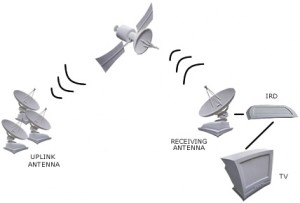
In aggregated delivery of video programs, two important elements are RF carrier bandwidth and number of programs carried in each carrier bandwidth. In analog system, only one program is carried in one RF carrier (7 or 8 Mhz wide in frequency band 47-862 MHz) providing for 106 channels in CATV networks.
The analog cable TV was afflicted with the following inherent drawbacks:-
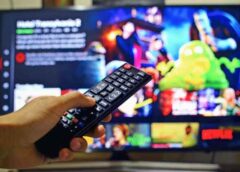
- The analog system was able to carry only 106 TV channels. This severely restricted the facility to make available all programs to the subscribers and denied to subscribers a large canvas of content available in the broadcasting universe.
- The quality of picture received at subscriber’s end, across all the channels, was not uniform in terms of clarity of audio and video. This was due to lack of understanding of SKIN EFFECT in coaxial cable, by LCO’S technicians, distributing content to subscriber homes and calculated placement of amplifiers with equalization.
- The analog cable TV systems did not have the technological feature of facilitating a-la-carte (individual) selection of channels. This compelled the customers to go by the bouquet of channels delivered on the network of a cable operator, restricting a say of the customer in selection of channels. Thus, the analog regime was not customer choice enabled.
- Another severe technological limitation of the analog services was lack of transparency as subscriber base/count was not known accurately. This lead to underreporting of subscription revenue and the consequent evasion of tax revenue. This also had adverse impact on transparent flow of revenue among stakeholders resulting in litigations.
- The limited content carrying capacities and lack of transparency distorted the business model for the stakeholders.
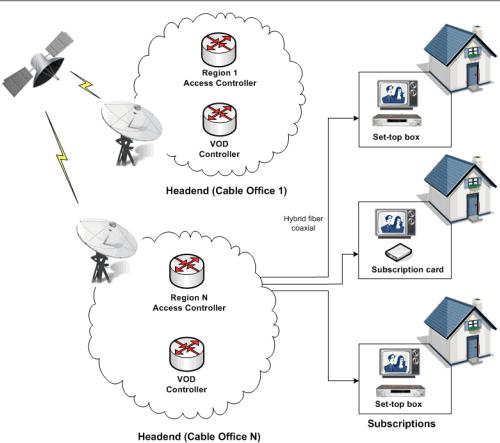
CATV SERVICES SCENARIO AFTER 2012
The MSO business is dependent on the broadcaster for content and partly on the LCO for last mile connectivity , since a major portion of the wireline network is erected and owned by the MSO on which are located edge PoP (Points of Presence) in proximity of LCO network, and subscription collections.
MSO is required to register for head ends for receiving satellite casted video programs carrying TV signals and aggregating them for distribution to subscribers through the LCOs network on which is located the subscriber.
LCOs, register themselves with the Deptt of Posts to erect and operate a wired video distribution network to receive bundled signals from the MSO and to subscribers in their area through optical fibre or copper cables.
Thus the CATV distribution platform is deemed to comprise of two entities, the MSO and the LCO.
India is the world’s second largest TV market after China. India has 181 millionTV homes, out of 93 Million (51 percent) homes have Cable TV.
Introduction of Digital Addressable System (DAS)
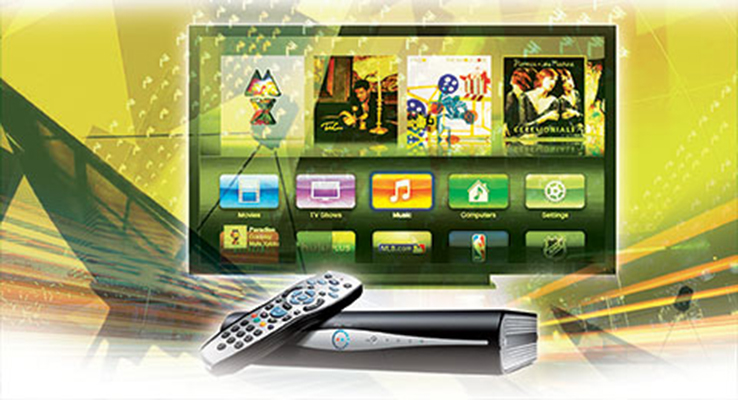
The Union Cabinet, in its meeting held on 13.10.2010, approved the proposal of the Ministry of Information and Broadcasting (MIB) for mandatory introduction of DAS in the Cable TV services, which, inter-alia, covered a time frame and road map for implementation of digitalization with addressability on a pan India basis in Cable TV services, leading to a complete cessation of analog TV services by 31.12.2014. Cabinet also approved certain amendments in the Cable TV Networks (Regulation) Act, 1995 through promulgation of an Ordinance, namely, the Cable TV Networks (Regulation) Amendment Ordinance, 2011. The said Ordinance was promulgated on 25.10.2011. Subsequently, the Cable TV Networks (Regulation) Amendment Act, 2011 was brought into force w.e.f. 31.12.2011. Later on 28th April, 2012, the Central Government notified the Cable Television Networks (Amendment) Rules, 2012 paving the way for implementation of Cable TV digitization. Cable TV Digitization was to be completed in IV phases by 2017.
INTENDED BENEFIT OF DIGITIZATION OF CATV SERVICES

Looking at the rising subscriber base , more content providers entered the business. The capacity of 106 RF channels carrying only one program per channels got exhausted. Hence demand exceeded the capacity.
The relief was sought in digitization, wherein more than one program(10 to 24) could be compressed into one RF channel capacity. But the receiving equipment at subscriber head could only de-modulate one channel carrying only one program. Hence, an interface SET
TOP BOX(STB) was necessitated to extract one program at a time out of many carried in the RF channel and enable its viewing.
In video broadcasting, some content if free to viewer and some is in PAY category to watch( i.e. subscribers have to select the program and pay for watching such choice). Hence such programs had to be encrypted. For watching such PAY content, encrypted at the headend, STBs had to be programmed(authorized) to enable viewing. However the regulations mandated encryption of all content aggregated for transmission at the Headend. The key advantages of digitization of cable TV services for various stakeholders, as intended, are as follows:-
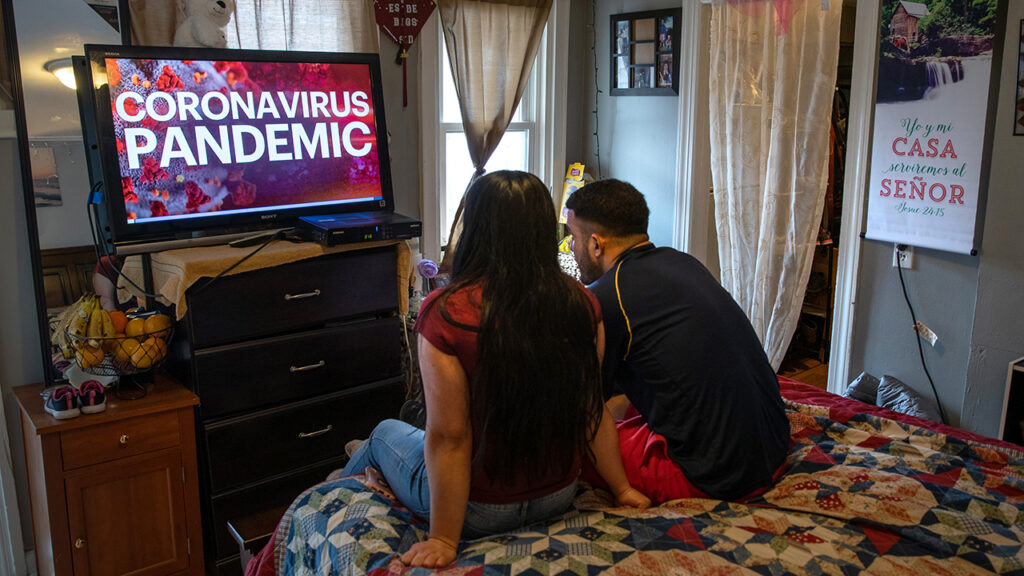
(i) Consumer Consumers can exercise their right to choose programs, from a list to be prepared by MSO) and pay only for those chosen programs which they wished to watch, depending up on their budget.
- The number of programs carrying capacity of networks increased fro 106 to 1060 if 10 Programs were packed per RF channel instead of one. It also enables subscribers to watch High Definition (HD) TV channels for better viewing experience.
- Digital cable TV subscribers also get improved signal quality of channels and have access to various value added and facilities like Electronic Programme Guide, Movie-on Demand, Video-on-Demand, Personal Video, Gaming, etc.
- Consumers could receive an itemized bill showing number of programs authorized on their STBs mentioning free and PAY content charges besides taxes levied on the bill.
(ii) MSOs and LCOs Digitisation of cable TV services, on bi-directional networks, enable the provisioning of Triple Play services i.e. voice, video, and data. Bundling broadband with digital channels is a
promising proposition provides a significant differentiator from DTH. This would
enable increase their Average Revenue Per User (ARPU) and enable convergence of Broadcasting and Telecom services. Broadband penetration in India will also increase through digitization of cable TV services.
.(iii) Broadcasters would be able to carry on their business transactions on auditable and verifiable subscriber base instead of negotiated base. Taking advantage of digital dividend, broadcaster can offer more number of programs including high definition content . They get value for their content, commensurate to their quality. The programs are protected against piracy also.
(iv) Government Transparency in subscriber’s base drastically brings down the losses that are caused to the Government by way of evasion of taxes through under-reporting.
There could be enhancement in generation of tax revenue due to provisioning of broadband on CATV and other value added services over the same network if upgraded to bi-directionality.
The digital cable TV network is vital infrastructure for penetration of broadband through which the e-Government services of both Central and State Governments can be accessed in the envisaged Digital India environment.
WHAT NECESSITATED INTRODUCTION OF DAS FOR CATV NETWORKS
CATV networking, from inception was a technology entrant by stealth, without any investment from the Govt, i.e. a total private endeavour. The system gained acceptance by users and galloped in connectivity numbers from late 70s to 1994 wherein estimated connectivity had crossed 20 million with distribution of over 20 programs. This evoked interest from Revenue Authorities as yet another source of revenue. Till that time this activity was not legal though serving politicians, bureaucracy and Rashtrapati Bhawan Cable TV Networks Regulation Ordinance was promulgated in end of Sep 1994 to become an Act in 1995.
This was followed by emergence of the MSO entity in this service since the legislation imparted legality to this service. Such MSOs had stronger financial muscle and management/administrative acumen to raise the nature of enterprise from primitive to somewhat corporatized. Earlier, every Cable Operator established a headend with an associated distribution wireline network. The MSO system, using better quality hardware, established headends which could aggregate more programs and transport their program stream over areas covering a longer radius of operation. This new entity enticed Cable Operators, now called LCOs, to close down their primitive headends and seek aggregated signal feed from this new entity.
Till 1997, all content on CATV networks was FREE to Viewer in analog mode occupying one 7-8 MHz wide RF channel in the R$F Band 47-862 MHz. The signal carrying coaxial cable could be connected directly to the domestic TV receiver to watch programs transported over the distribution cable. In early 1197, number of satellite casts for distribution through CATV networks started galloping with more broadcasters entering this field. And then was brought in the concept of PAY TV content requiring subscribers to PAY for watching such content. Broadcasters encrypted such content. The receiving equipment for such content to be used in headend had to be decrypted and then aggregated in the program stream. In simple terms this practice was introduction of addressable STB at headend level to enable access to such content remotely and selectively. This practice also brought in use autocratic levy of charges upon the MSO and arbitrary enhancements in connectivity figures to be charged from the MSO threatening denial of provision of such content should the MSO resist such enhancements.
The discontent from MSOs caused amendment 2002 to the Cable Act providing for introduction of CAS(Conditional Access System), wherein a subscriber had to elect to
subscribe to conditional access programs through a Set Top Bo0x(STB) to be installed at subscriber premises and subscriber had to consent to pay for such content when billed.
CAS envisaged encryption of PAY content only and authorizatio9n at subscriber end through addressable STB. The FREE to Viewer content was NOT to be encrypted and could be viewed on the domestic TV set.
CAS was to be implemented wholly in Chennai and partially in Delhi, Kolkata and Mumbai. This endeavour was a total implementation failure by the MIB and TRAI
With explosion in number of content providing broadcasters and MIB granting permissions from down-linking, the capacity of 106 RF channels in frequency band 47-862 MHz got exhausted against the requirement. The solution was sought in conversion from annolg to digital mode in CATV networking. In digital systems more than one program(10 to 24 ) could be compressed per RF carrier channel, thus 3enhancing the program carrying capacity of networks from 106 to over 1000.
However, content security was a matter of concern. Hence the new statute mandated encoding(digitization), encryption based authorization of viewing the content through incorporation of a Subscriber Management System (SMS) at the headend and use of a digitally addressable STB at subscriber premises.
TRAI’S RECOMMENDATIONS TO MIB FOR IMPLEMENTATION OF DAS
For DAS implementation TRAI also made the following recommendations to the MIB :-
- Equipments, devices and accessories used by the cable TV service providers need to conform to relevant BIS standards, as mandated in the Cable Act. This was of particular significance for MSOs who deploy 90% of the hardware in CATV DPO.
- The basic custom duty on digital head-end equipments and STBs be reduced to zero for the next 3 years, reckoning from date of promulgation of Cable TV Networks Regulation Act Amendment 2011. to give a boost toconversion of the broadcast video programs distribution network to addressable digital system.
- The taxes/levies on the broadcasting distribution sector be rationalized.
- CATV networking services transported over wireline medium (Hybrid Coax Fibre) from headend to subscriber, were literal encroachment without authorized RoW (Right of Way) from Government Authorities. The MSOs/LCOs be made eligible for seeking Right of Way (RoW) on non-exclusive basis for laying optical fibre/cable network.
- A massive education programme be taken up to educate the stakeholders about the benefits of a digital addressable cable TV network.
All service providers who have set up a digital addressable distribution network before the sunset date be treated similar to telecom service providers and be eligible for income tax holiday for the period from the date of setting up of the network, or 1.04.2011 whichever is later, till 31.03.2019. For this purpose, the date of certification by M/s BECIL, or any other agency authorized by TRAI, will be reckoned as the date of setting up of the network.”
INFIRMITIES HINDERING DAS IMPLEMENTATION
MIB. The constraints are as under:-
- DAS pertains to CATV services operating under Cable TV Networks Regulation Act 1995 and Rules as amended from time to time.
- DAS implies distribution of content from ONE point (Headend) to many points (Subscriber premises) using RF telecommunication techniques for transmission and reception through a compatible equipment (domestic TV receiver) over wireline medium. Th9is description meets the definition of Broadcast.
- CATV is NOT accorded status of Broadcast by the governing MIB.
- India has yet to promulgate Indian Broadcasting Act. Hence MIB is governing Broadcasts without any backing of statute.\
- While MIB legitimised PAY content, through amendment in Cable Act, they have not been able to assign steps to price the content. This has been left to Broadcasters.
- Broadcast engineering, in general, and wireline broadcasting in particular, are not covered in the Indian academia. Hence formal education for acquisition by people employed in rendering such services is non-existant.
- Personnel in this field, may have academic qualifications from other disciplines and experience gained in employment in such vocations in public sector, including but not limited to Govt of India..
- Pub-casters, like Prasar Bharati, dwell in Free to Viewer distribution of video content which is also digital but not addressable.
- DAS implementation requires on ground verification and acredition of implementation. MIB’s authorized officers category too lacks hands on knowledge on such compliance certification.
- TRAI is assigned the task of regulating CATV services and DAS implementation but has only authority to frame regulations. Even if a violation is noted they are expected to file a criminal suit with a Chief Metropolitan Magistrate(CMM).
- Thus DAS implementation has remained confined to closed room meetings and recorded minutes of such meetings.
- DAS implementation has been reckoned from number of STBs seeded by feed back from MSOs rather than checking whether subscriber has been empowered with the intended legislation (Most subscribers do not know what is DAS ?; what is item9ized bill ? Who is the MSO ? To whom they complain if some one points out variation from DAS as legislated)
TRAI , an organization raised to regulate telecommunication services (voice and data), under DoT, has also been appointed a regulator for CATV with the following infirmities :-
- Broadcasting is a service like telecommunications though Telecommunication is NOT broadcast.
- Telecommunications pertain to communication from ONE point to ANOTHER point for a contacted session using a wired or wireless medium and usage based billing.
- Telecommunication inherently deals with connectivity without any concern for nature of content, its security or piracy.
- Most of staffers, from TELCO background, consider CATV networks bi-directional capable of handling instantaneous ‘On Demand Services’.
- They have not been able to obtain from Broadcasters the basis for pricing of PAY content and place the same in public domain.
- Under pressure from broadcasters, they have legitimized bundling of content which is against the spirit of Cable Act.
- They are not aware that Cable Operators have firewalled DAS implementation and TRAI Regulations in the last mile. Subscriber has paid for STB without receipt for payment and transfer of lien. Cable Operators charge subscribers a fixed monthly amount without bill or receipt and remit a part of it to MSOs who bill LCOs for adjustment of advances for recharge. The basis for this monthly amount being charged is not known.
- They undertake regulation activities, limited to drafting recommendations and regulations when so directed from MIB.
- The modus operandi has been float of consultation paper to stake holders, holding open house discussions, fattening the files with attachment of comments and making recommendations to MIB, to make the process look participative.
- Lack enforcement mechanism on ground to ensure comp-liance of regulations promulgated by them .
- Even on suggestion, TRAI has not been known to have conducted investigative checks and audits for conformity at the Headends and Subscriber end.
- Existing general impression that TRAI works under influence of Broadcasters, as corporatized entity, rather than LCO the end service provider, in drafting regulation which benefit Broadcasters more than LCOs or Subscribers.
- Influenced legalisation of Carriage Fee and Placement fee, contrary to such provisions in Cable Act as amended till date.
BROADCASTERS do not manufacture content. They source the same for distribution and viewing by subscribers. This implies:-
- Seeking content and assigning metadata for identification in real time and time-deferred access.
- Content is classified as (a)PAY content for which the the Distribution Platform Operator(DPO) is expected to charge from the subscriber and remit the same to the Broadcaster against invoices raised for the same and (b) FREE to VIEWER for which the viewer is not expected to make any payments for watching.
- All content is provided for distribution to DPO against specific request through an Interconnect Offer (ICO) specifying terms and conditions for distributions and charges if any for these.
- Expenses on satellite casting
- Seeking advertisements to offset OPEX.
- Payment of Carriage and Placement (listing in the EPG) fee to DPO)s on per subscriber basis (reckoned from details of active STBs in the network)
- Permission from MIB for inclusion in the list of programs to be distributed.
- Adherence to TRAI regulations for distribution of content through the DPO.
- Payment of applicable fees and taxes.
- Marketing and DPO relations management.
HEADEND SERVICE PROVIDERS (HSP) are registered with the MIB to establish and operate a DAS headend which involves :-
- Establishing a receiving satellite antenna farm to receive programs from satellites visible from the headend site.
- Transporting the signal carrying the program from the dish antenna farm to processing hardware (satellite receivers, encoders, encryptors, multiplexersw, modulators, viewing authorization messaging, combiners, launch levels assurance, conversion for transportation on HFC network) inside the headend and security of data base and application servers.
- Ordering and ensuring that hardware installed meets standards and post commissioning performance regulations in conformity with Act, Rules and Regulations.
- Concluding B2B Interconnect Agreements with LCOs regarding QoS and share in payments rendered by subscribers.
- Concluding B2C Agreement with subscriber to appraise charges applicable for service, itemized billing and customer care.
- Itemized billing of subscribers.(In practice bills are generated upon LCOs on per STB per month basis)
- Maintaining and uploading details of Interconnect Agreements with Broadcasters and LCOs.
- Undertaking and submitting reports on subscription and technical audits to TRAI and Broadcasters.
LOCAL CABLE OPERATORS registered with Deptt of Posts for establishing a wireline network, with authorized Right of Way(RoW) to receive and distribute digitally addressable program stream from HSP to the subscriber. This involves :-
- Appraising subscriber about DAS.
- Presenting services rate card showing charges for service, PAY programs (a-la-carte and/or bouquets), taxes applicable, period covered by the bill and date by which payable.
- Helping Subscriber to select programs from the rate card and completing the application form to be submitted to the HSP for providing DAS service.
- Obtaining payment for STB to be installed for availing DAS service.
- Submission of application form completed by subscriber to HSP for allocation of subscriber ID, a particular STB and Viewing card duly paired and STB programmed to enable programs of choice exercised by subscriber in the application form.
- Obtaining STB allocated for the subscriber and installing the same in subscriber premises with receipt for the STB.
- Reporting installation of STB for activation of service and commencement of billing in the SMS installed in the headend.
- Appraising subscriber about customer care and complaint redressals in service rendering.
- Ensuring that content from headend is not pirated.
- Ensuring that no content, other than that aggregated at the headend, is delivered to the subscriber by local insertion.
- Presenting itemized bill to subscriber for DAS service clearly showing (a) HSP details (b) LCO ID (c) Subscriber ID (e) Period covered in the bill (f) Due date for payment (g) charges for (i) Network Capacity Fee (ii)PAY content ‘a-la-carte’ (iii) bouquets (iv) taxes and (f)Total amount payable.
- Obtaining payment from subscriber and rendering the same to HSP for computerized transfer of share of LCO in rendering the service.
SUBSCRIBER is not aware of the following :-
- Content is of two types (a) Free to Viewer and (b) To be paid for watching(as a-la-carte or bouquet selection)
- DAS intends empowering subscriber to exercise formal choice on programs to 3watch and pay only for the selection when billed.
- DAS service is to be formally applied for with the HSP.
- Who is the HSP ?
- Why STB is necessary to avail DAS services.
- DAS services are to be billed with itemized details.
- LCO (Cable Wala) is not the HSP but only a partner in distribution platform.
- There is a QoS laid down for benefit of subscriber.
- HSP has to establish a Customer Care facility for the subscriber.
- Where to lodge a complaint if QoS is not met.
- STB which has been paid for by the subscriber becomes their property.
- LCO collecting money every month without bill and receipt is causing loss of tax to the Govt.
Conclusion It would be clear from the above that DAS has not been implemented as intended. Governing entities (MIB and TRAI) both have been governing only on files in closed rooms. There is no enforcement mechanism or even an inclination to ascertain state of implementation at subscriber end through an investigative audit.(Mandatory Audit envisaged in TRAI Regulations focuses on subscription audit for benefit of Broadcasters)
This calls for brain storming on future of Cable TV Networks Regulation Act and its repeal, if necessary, because of inability of MIB to implement this statute.
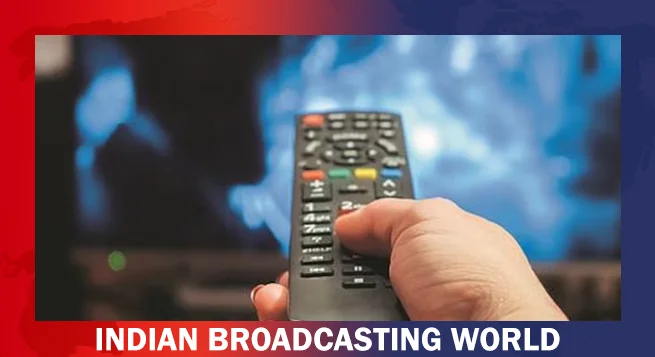 SC tells petitioner to take plea on OTT platforms to govt.
SC tells petitioner to take plea on OTT platforms to govt.  Network18 TV news biz revenue up 28% in Q4 FY24
Network18 TV news biz revenue up 28% in Q4 FY24 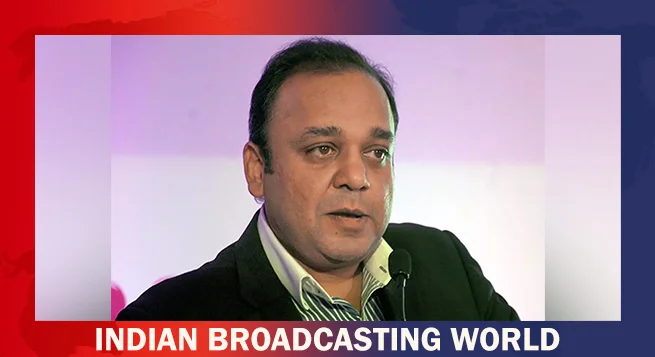 As Zee gets lean, Punit Goenka in charge of critical verticals
As Zee gets lean, Punit Goenka in charge of critical verticals 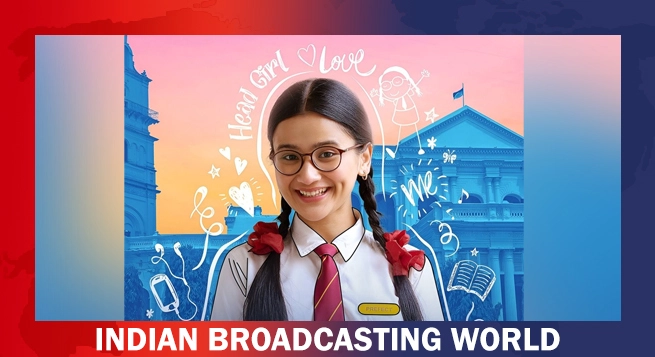 Amazon miniTV unveils ‘Amber Girls School’
Amazon miniTV unveils ‘Amber Girls School’ 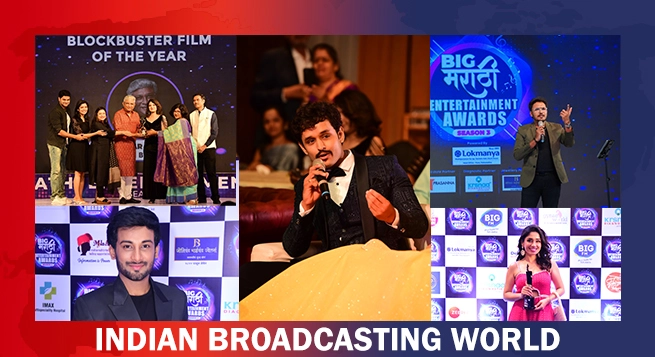 BIG Marathi Entertainment Awards 2024 celebrates Marathi talent with glittering ceremony
BIG Marathi Entertainment Awards 2024 celebrates Marathi talent with glittering ceremony 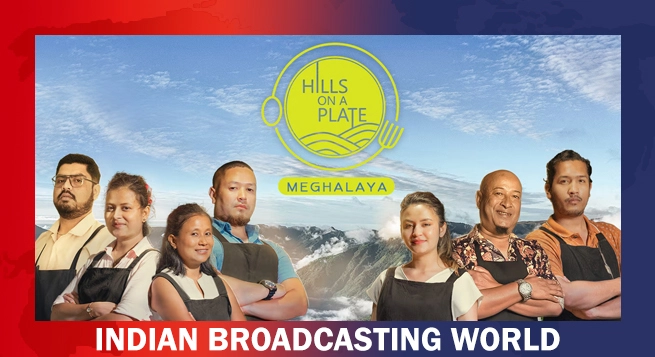 Hills on a Plate: Meghalaya Chef Wars’ premieres on JioCinema
Hills on a Plate: Meghalaya Chef Wars’ premieres on JioCinema 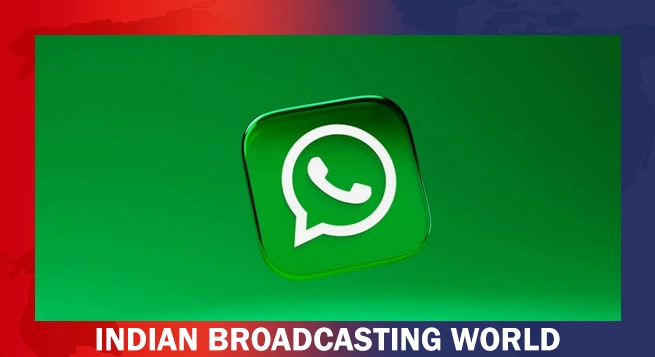 WhatsApp threatens shutdown over encryption battle
WhatsApp threatens shutdown over encryption battle  WBD unveils Olli data platform for enhanced ad-targeting
WBD unveils Olli data platform for enhanced ad-targeting 

